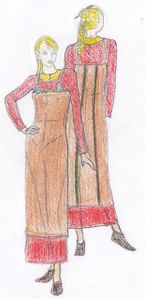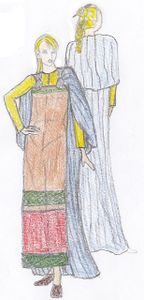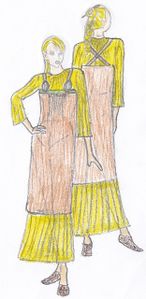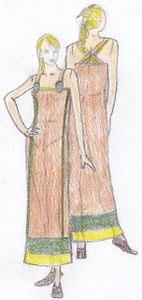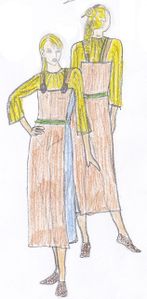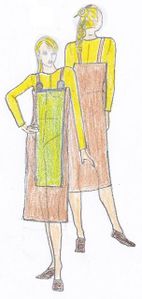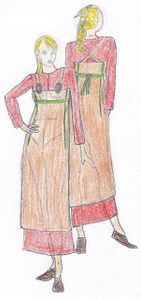| Viking Hangerock |
|---|
|
|
This article is currently just a copy of a hand-out that we prepared for a discussion group a couple of years ago. We were trying to show the possible different interpretations that you can come up with based on the archaeological evidence.
We are planning on expanding this article soon but until then Hilde Thunem has written a very good article on the subject that you can find here.
It is my assumption that the Scandinavian style of dressing did not survive the 10th Century (1000AD). In the latter half of the 10th Century Scandinavia experienced a cultural revolution which included:
- Christianisation
- The rise of National States
- Adoption of Western European Culture
- Permanent Towns
From the beginning of the 10th Century on-wards women seem to have started to adopt western female fashion, a process that probably closely followed an individual’s conversion to Christianity. Women who settled in Britain seem to been extremely quick to adopt local styles with most burials with grave goods being attributed to first generation settlers.
Some possible reconstructions
The seven figures shown here are intended to demonstrate possible interpretations of female clothing. Any single item from any of these examples can be interchanged with another. For example the Kostrup style of pleated hangerock could be worn with a non pleated shift and a back train.
|
Woollen hangerock with embroidered darts down the back and a silk bias strip between the brooches. Worn over a woollen dress and a linen shift.
|
Woollen hangerock with a tablet woven strip between the brooches and a woven band around the hem. Worn over a linen hangerock with a band around the hem. Worn over a linen shift. A woollen back train is worn over all of this. | ||
|
Pleated woollen hangerock with a tablet woven strip between the brooches. Worn over a pleated linen shift.
|
Woollen hangerock with embroidered darts down the sides and a woven reinforcing band around the hem. Worn over a longer linen hangerock. | ||
|
Double linen style of hangerocks. Worn over a pleated linen shift. A textile belt is worn around the waist.
|
Woollen hangerock with a separate linen apron over the top. The apron is edged with a silk bias tape. The Hangerock is worn over a non-pleated linen shift. | ||
|
Woollen empire style hangerock with embroidered darts front and back. A textile belt is worn under the chest. Worn over a woollen shift. |
